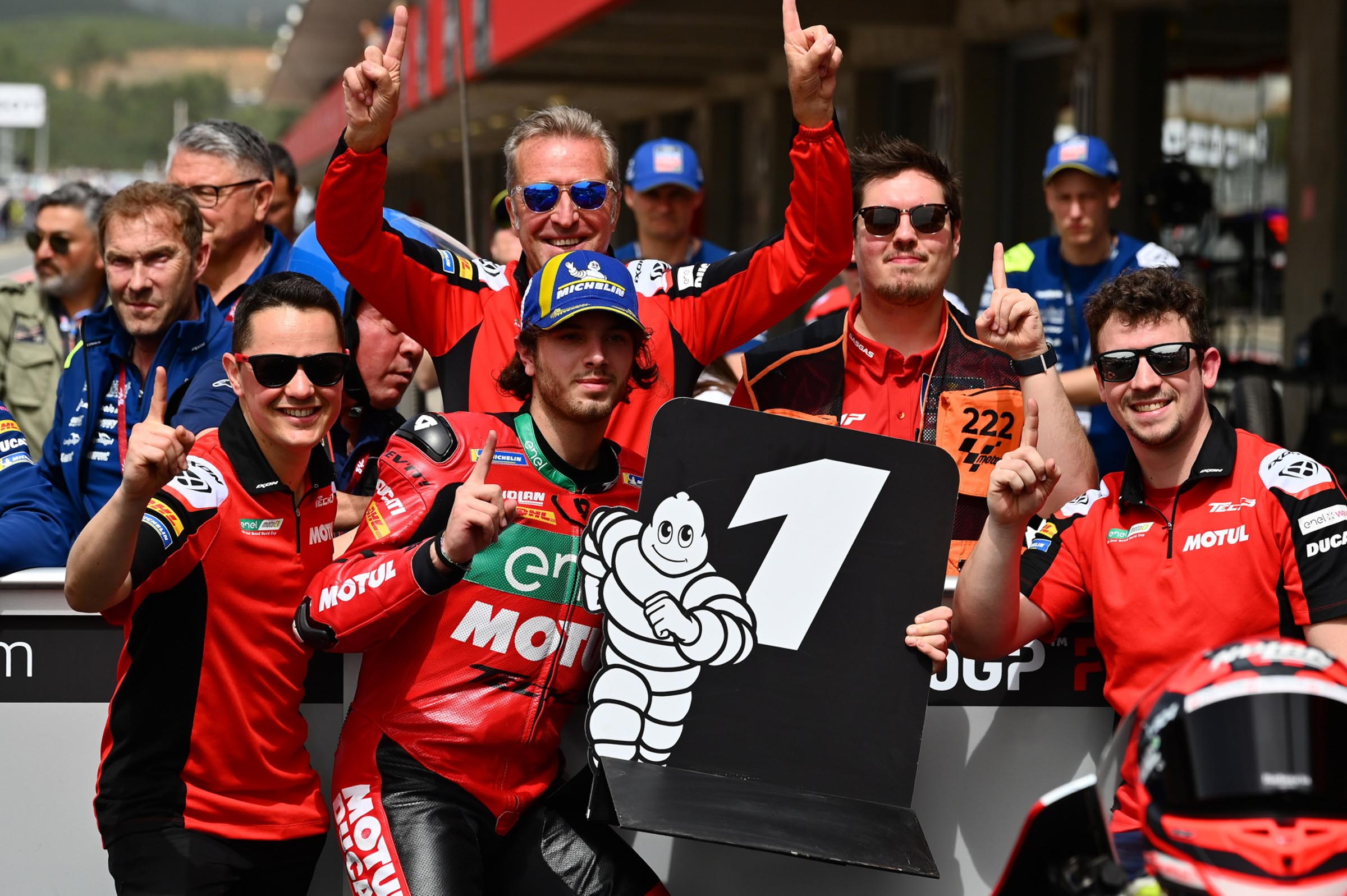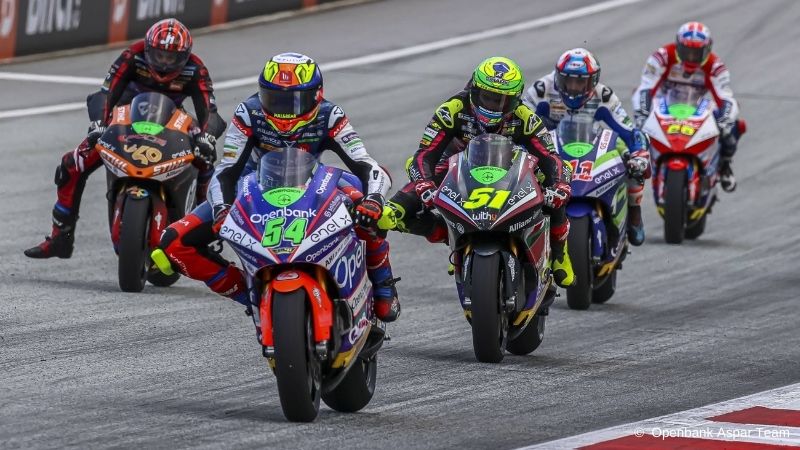
The engine brake of an electric motorcycle is completely different from that of a traditional motorcycle. On the MotoE this function is electronically adjusted and can be set according to the rider's riding style.
An essential element for any modern motorcycle, regardless of whether it is an electric or internal combustion one, is the electronics. Four are the main areas in which teams can intervene on the electronics of the MotoE: the power map (two sets), the throttle curve, the main engine brake (three sets) and the additional engine brake. The actual MotoE bike is not equipped with traction control or anti-wheelie system but both will be present from 2023 on the Ducati prototype.
The engine brake of the MotoE does not have a real 'character' like on ICE motorcycles and can be built at the software level. On the MotoE it is possible to set which behavior to assign to the engine brake through the control system. The same bike can therefore be adapted to a rider who wants a lot of engine braking and to another who wants a bike with an almost 2-stroke behavior.
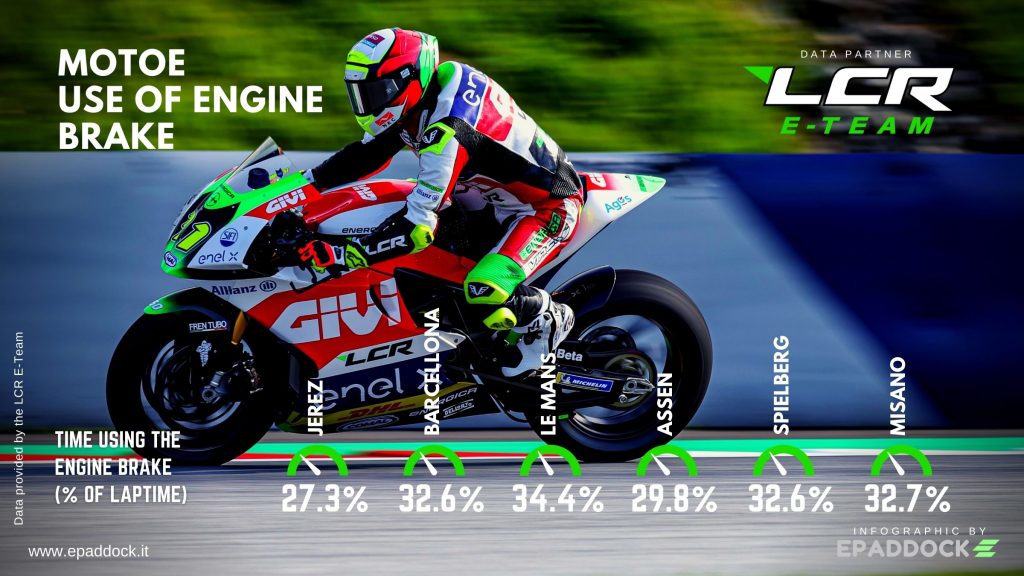
For the riders of the MotoE World Cup is not easy to adjust and use the engine brake. We asked Matteo Ferrari, the first winner of the MotoE World Cup, to explain how he uses the MotoE engine brake on track.
"With the MotoE the engine brake is very progressive because there are no gears and it is very important to use it well to brake hard. Since we have been using the bigger tire we have been able to slide the rear more than in the first year under hard braking. However, this means that when the rear tire begins to slide, you would react as with a motorcycle with a traditional engine in which the slide recovers gradually and allows the rider to enter the bike in the curve. Instead, with the MotoE, the engine brake is progressive and increases more and more so, when the rear tire starts to slide, you expect it to come back but, the more the bike slows down, the more the engine brake increases and the rear tire slides more and more."
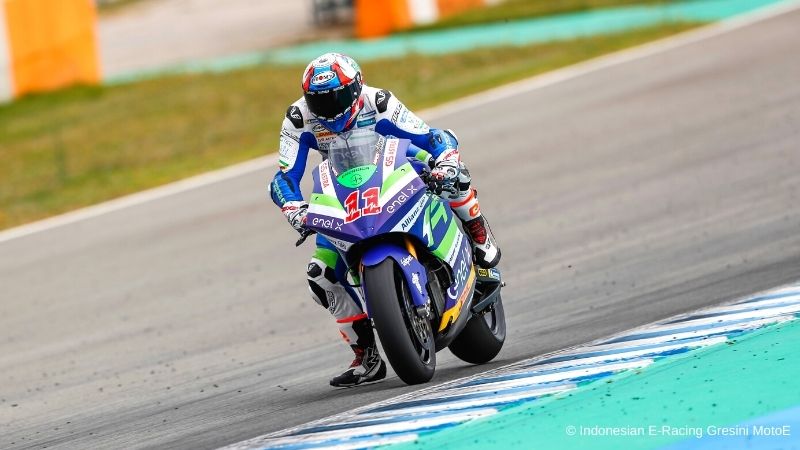
“There is a countermeasure but it is difficult to put into practice and you have to be quick: since there is no clutch like on normal bikes, the only thing you can do is twist the throttle. So while you're squeezing the brake lever with two fingers, you just have to twist your wrist just a little to give that little bit of gas to rev the rear tire and stop it from sliding. This technique often saves you from going wide or having a high-side under braking. Of course, it is a practice that does not come automatically because we all come from other categories where in similar cases you use the clutch. Here, on the other hand, while you are braking and trying to overtake another rider, you have to think about accelerating to keep the bike straight, it's not easy!"

The MotoE is also characterized by the presence of a second engine brake operated by the push-button panel positioned on the left handlebar (black button in the photo). Its origin comes from the idea of Energica to give riders the opportunity to make a medium set-up of the main engine brake and, if necessary, have something more thanks to the additional one. When this second engine brake is used together with the main one, it is possible to achieve engine brake performance similar to that of an SBK. On track, therefore, the MotoE riders can rely on two engine brakes in addition to the braking system supplied by Brembo (see the details of the braking system).
Related to the engine brake, there is another characteristic of the braking of the MotoE: the regenerative capacity. The motor and battery are capable of recovering some of the braking energy. The more engine brakes, the more energy is regenerated and stored into the battery. This last parameter is continuously recorded by the bike's data acquisition system and analyzed by the teams when the rider returns to the pits. (to know how the data acquisition system of the MotoE click , promising).
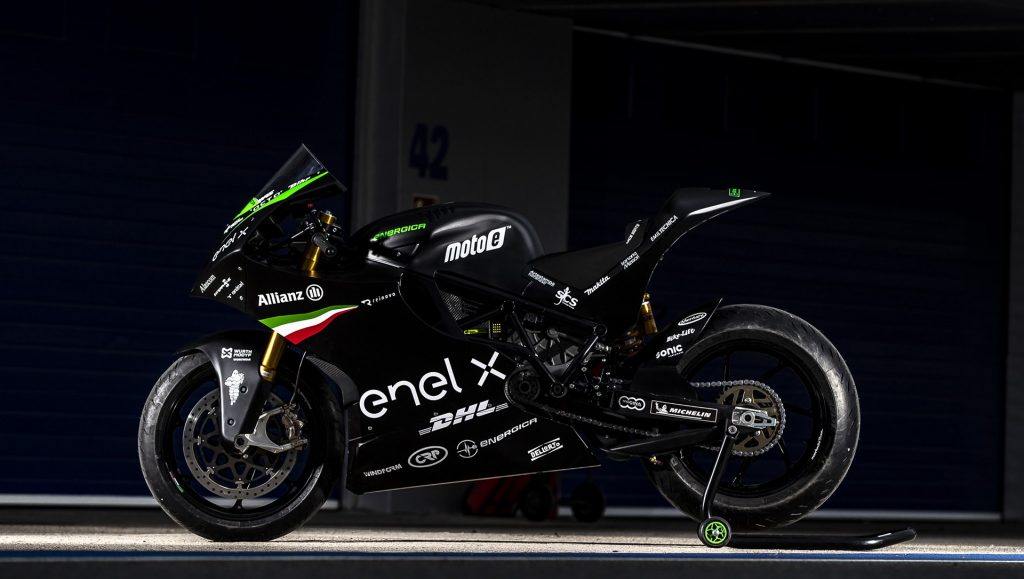
The MotoE Bike
How MotoE 2022 is made and how it works

In these sections you can find further information and details on MotoE and its main components.
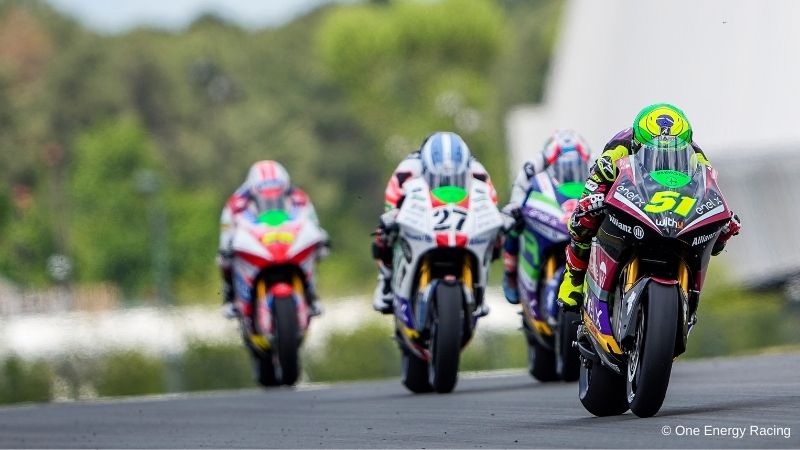
The MotoE Bike
Performance and technical data
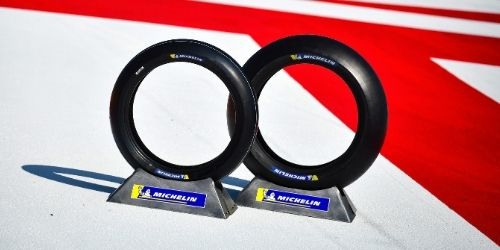
The MotoE Bike
Tyres
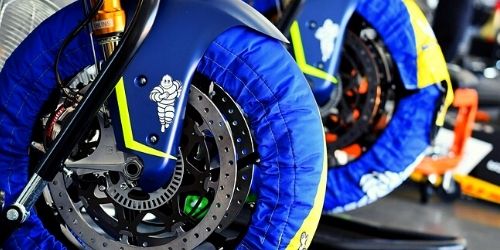
The MotoE Bike
Braking system
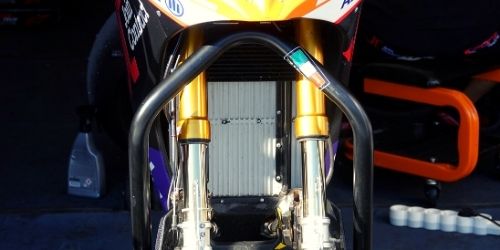
The MotoE Bike
Suspensions
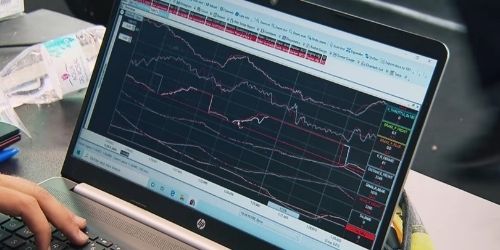
The MotoE Bike
Data acquisition
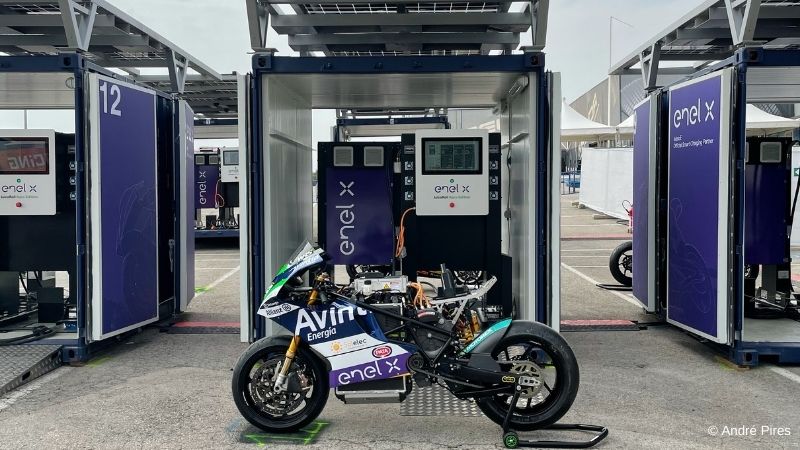
The MotoE Bike
Charging system

To be updated on MotoE World Cup, subscribe to Epaddock's Whatsapp broadcast and receive all our news on your mobile phone in real time: find out how here.













